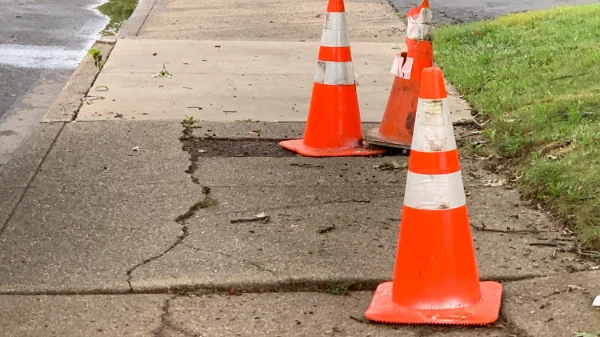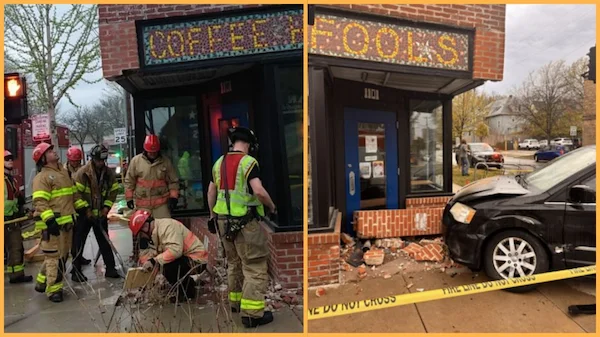Editor's Note: The challenges our cities face are growing, but so is the strength of this movement. Every story we share, every idea we spread, and every tool we build exists because people like you are committed to showing up. Your membership isn’t passive—it’s the momentum that makes change possible.
In 2013, the capital of Estonia, Tallinn, declared transit (buses, trains, and trams) free for residents. Ten years later, journalist David Zipper and city leaders observed that free fares aren’t getting Estonians out of their cars. In fact, more of them drive now than in 2013.
When Tallinn moved to eliminate fares, they had a few goals in mind. For one, by limiting this program to city residents—nonresidents and visitors still have to pay—local leaders hoped that more people would call the capital home. This would increase the local tax base and by extension, tax revenues. Secondly, the city wanted to reduce barriers to transit, like the price tag to board. “[Eliminating fares] was seen as a social measure,” Tallinn’s deputy mayor told Zipper. “The city wanted to ensure that usage of public transport would not fall because of its price.”
Nevertheless, in the last 10 years, commuters have been steadily choosing cars over trams. The Estonian government reported that transit use in Tallinn has fallen from over 40% in 2013 to under 30% in 2022. Commuters who drove to work rose from 40% to 50%.
What’s more, among Tallinn’s lower income strata, transit use has also fallen. “Transit use among those in the bottom quartile of income distribution plummeted from over 60% of commutes in 2013 to around 35% in 2022,” Zipper wrote. Car use among that same group more than doubled.
While this data definitely challenges the assumptions and motivations behind eliminating fares, the story isn’t simply that making transit free doesn’t work. In Tallinn, a host of factors conspired to make transit less attractive—or, perhaps it’s more accurate to say, the car more attractive.
Lower-income residents are more likely to work jobs that have relocated to the periphery of the city. “The city’s public transportation network was designed to whisk people in and out of the city center, but manufacturing jobs have steadily relocated toward burgeoning suburbs with inferior transit access,” Zipper wrote. “A particular challenge for those commuting from peripheral Soviet blocks.” Those blocks, he notes, are more likely to house Tallinn’s mid- to lower-income population.
Purchasing a car becomes a justified expense for even the city’s lower-income residents when coupled with the fact that driving remains convenient. Mari Jussi, a sustainable mobility advisor to the Estonian Transport Administration, points out that parking is free outside of the city center and, generally speaking, motorists are not paying the “true cost” of car ownership. For example, cars aren’t taxed in Estonia like they are elsewhere in Europe, despite the impact they have on the country’s roads and environment. Additionally, fines for blocking the sidewalk or parking illegally have remained at 20 euros for over a decade, despite inflation and wage growth.
In essence, Estonia’s leaders have learned that if the goal is to increase ridership, free fares alone won’t do the trick.
In Tallinn, transit headways are enviable compared to median wait times anywhere in the United States. The Kaubamaja-Mustamäe trolleybus comes every nine minutes for most of the day and intersects with dozens of others with equal, if not better, frequencies. The Kopli-Suur-Paala trams run every five minutes during peak hours and otherwise every ten. The system’s online portals are easy to navigate, even for non-Estonian speakers, and service runs past midnight for most lines, with others offering night owl service. The coverage is impressive for a city of less than half a million inhabitants.
It's immediately apparent that Tallinn’s problems don’t mirror those of North America. And with that in mind, Zipper asks a poignant question: “If providing free rides hasn’t boosted ridership in Tallinn, it’s unclear why it would have a greater impact in a place with longer wait times and fewer dedicated transit lanes.”
What lessons can North America learn from Tallinn’s underwhelming response to free fares?
1. Focus on service.
The city found that improving service attracted and retained more riders than any other measure. Combining two bus routes into a faster, more frequent line resulted in a 70% increase in ridership. It’s a trend Tallinn has observed time and time again. “Any extra money should be put toward transit service, and not zero fares,” Jussi told Zipper. “Transit’s price is not a barrier for most people. It’s service quality and speed of the trip.”
For those questioning how vital frequency is to a transit user, Jarrett Walker of Human Transit offers a compelling analogy (paraphrased here): Imagine there's a gate at the foot of your driveway. That gate only opens once every half hour for about 20 seconds, and you have no control over it. Infuriated yet?
This is the experience of daily bus riders in most U.S. cities, compounded by the hellish experience of trying to make a transfer between two lines that run every 30 or 60 minutes.
For Walker, concentrating on decreasing headways—say from 20 minutes to 15 between buses—on a handful of routes with existing demand can produce the biggest impact on ridership. Multiple routes with reduced wait times can evolve a system into a coherent network. Increased frequency also keeps the service usable should any disruptions arise. “If a vehicle breaks down or is late, frequency means another will be along soon,” Walker wrote in his Transit Ridership Recipe.
2. Transit needs to go where people want to go.
When manufacturing jobs relocated to the city’s periphery, the target beneficiaries of free fares—Tallinn’s lower-income population—found it easier to commute by car than by transit. Owning and operating a vehicle is markedly more expensive than free transit, yet the former increased in popularity in part because it actually transported people where they needed to go.
There are countless analogs in the United States. In his newest book, Lost Subways of North American, cartographer and lawyer Jake Berman examines several transit systems, including that of Dallas, Texas. DART’s (Dallas Area Rapid Transit) waning ridership, he says, can in part be attributed to the location of its stations. The Mockingbird station seemingly serves Southern Methodist University, yet the campus is a mile away by foot and that walk involves crossing a freeway. “This is not exactly a pleasant walk in the Texas heat and humidity,” Berman adds.
It also doesn’t help that many of the stations are surrounded by parking and often nothing else in walking distance. Worst still is that this style of building transit is by no means unique to Dallas. The suburbs of Philadelphia, New York, and Miami offer the same lack of place. In some cases, it’s even illegal to build anything other than parking lots within the immediate vicinity of train stations and single-family homes within walking distance.
- Related reading: “If You Want People To Use Public Transit, Connect The Places Where People Want To Walk.”
3. Not choosing a car is easier when driving is less convenient.
What Tallinn has demonstrated is that where cars are in direct competition with transit, they’re likely to win. Cars, however, have a significantly larger adverse impact on the environment, roads, and of course, people, so there’s good reason to incentivize people to move around by other means. Part of that involves making choosing travel by personal vehicle the less convenient choice.
One of the easiest, albeit most controversial, ways to discourage car use is to make it harder and more expensive to park. This doesn’t eliminate driving or parking, but it encourages other methods of transportation where they exist or even carpooling.
As Strong Towns Senior Editor Daniel Herriges wrote in his piece, “But Where Will I Park?”:
It’s not that people who need to drive and park are just to be inconvenienced or that their needs don't matter. Part of what will make it still possible to drive into the city when you really need to is reducing the need for the people who live in the city full time to drive and park everywhere they go. There are many good reasons to drive, so in a Strong Towns world, we can free up a healthier, more reasonable number of parking spaces for the people who actually have those reasons, by creating a world of better options for all other occasions.





